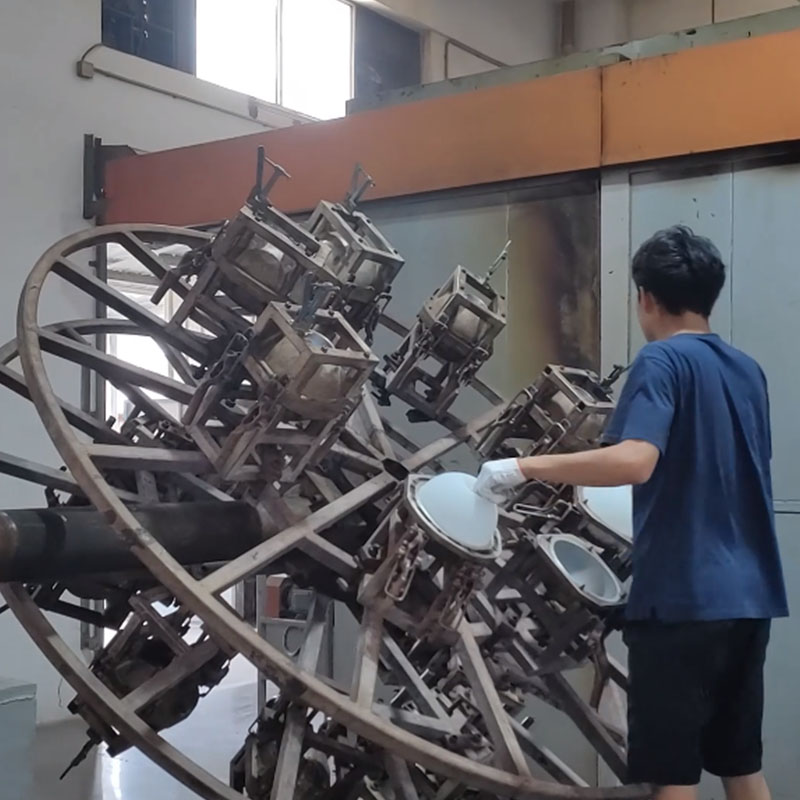Techniques and Considerations for Demolding in Rotational Molding Process
 Feb 29,2024
Feb 29,2024

Techniques and Considerations for Demolding in Rotational Molding Process
Demolding, the step of removing the finished product from the mold, is a crucial aspect of the process. It requires careful attention to ensure that the product is not damaged or deformed. This article will explore the techniques and considerations for demolding in the rotational molding process.

1. Understanding the Demolding Process
Demolding is the process of removing the solidified plastic product from the mold after the rotomolding cycle is complete. It is a delicate step that requires precision and care to ensure that the product maintains its structural integrity and quality. Proper demolding techniques are essential to prevent any damage to the product.
2. Common Demolding Techniques
There are several techniques used for demolding in the rotomolding process:
a. Manual Demolding: In manual demolding, operators use tools like hammers, chisels, or wooden mallets to gently tap and loosen the product from the mold. This technique requires skill and precision to avoid damaging the product.
b. Mechanical Demolding: Mechanical demolding involves the use of automated equipment, such as robotic arms or specialized demolding machines, to remove the product from the mold. This technique offers greater precision and can be used for complex geometries or larger products.
c. Split Molds: Split molds are designed with a hinged or removable section, allowing for easier removal of the product. This technique is particularly useful for complex or large products that may be difficult to remove from a traditional closed mold.
3. Considerations for Demolding:
Demolding in the rotomolding process requires careful consideration of several factors:
a. Product Design: Complex product designs, tight tolerances, and intricate geometries can make demolding more difficult. These designs may require specialized demolding techniques or equipment to ensure the product is not damaged during removal.
b. Material Thickness: Uneven wall thickness or thicker sections of the product can sometimes impede demolding. These areas may require additional attention or techniques to ensure smooth removal.
c. Mold Design: The design of the mold, including the choice of material and construction, can impact the ease of demolding. Factors such as draft angles, parting lines, and cooling systems should be carefully considered to facilitate an efficient demolding process.
d. Adhesion: In some cases, the melted plastic may adhere strongly to the mold, making demolding challenging. This adhesion can be reduced by using mold release agents or adjusting the mold temperature during the rotomolding cycle.
4. Best Practices for Demolding:
To ensure successful demolding, it is important to follow best practices:
a. Use the Right Tools: Choose the appropriate tools and equipment for demolding, depending on the product's design and complexity. Ensure that tools are clean and free from burrs or sharp edges that could damage the product.
b. Train Operators: Provide proper training and guidance to operators to ensure they understand the demolding process and techniques. This includes teaching them how to use tools safely and effectively.
c. Mold Maintenance: Regularly inspect and maintain the molds to ensure they are in good condition. Address any issues, such as worn or damaged areas, to prevent problems during demolding.
d. Optimize the Rotomolding Process: Adjust the rotomolding process parameters, such as temperature and rotation speed, to optimize the material flow and ensure proper adhesion to the mold. This can make demolding easier and reduce the risk of damage.
By mastering the various demolding techniques, taking necessary considerations into account, and adopting best practices, Light Venus is continually refining its demolding procedures to manufacture rotomolded products of the highest quality. Please browse our website and learn more about our rotational molding capabilities.
 Tel: 0086-13632687993
Tel: 0086-13632687993  Email: roto@lightvenus.com
Email: roto@lightvenus.com

 Home
Home Why Rotomolded Products Need Rounded Corners
Why Rotomolded Products Need Rounded Corners  You May Also Like
You May Also Like



 Tel
Tel
 Email
Email
 Address
Address








